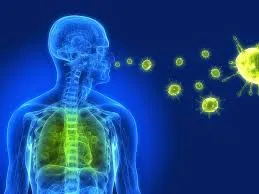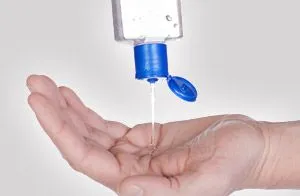Hello Steemit! I knew that many of the infectious diseases are disorders caused by organisms, such as bacteria, viruses, fungi or parasites. And that many organisms live in our body.
General description of Infectious Diseases:
Some infectious diseases can be transmitted from one person to another. Some are transmitted by bites or stings of insects and animals. Other causes are due to the consumption of contaminated water or food or exposure to organisms in the environment.
In the case of pathogenic biological agents of macroscopic size, such as worms, there is no mention of infection but of infestation.
When the infection or infestation is caused by protozoa, worms or arthropods, we speak of parasitic disease because the groups have traditionally been studied by parasitology.
Mild infections may respond to rest and home remedies, but some life-threatening infections may require hospitalization.

There are many different ways to get an infectious disease:
- Through direct contact with a person who is sick. This includes disturbing, touching, sneezing, coughing and having contact sexual. Pregnant mothers can also transmit some germs to their babies.
- Through indirect contact, when you touch something that has germs.
- For example, you might be in contact with germs if someone who is sick touched a door handle and then you touch it.
- Through insect or animal bites.
- Through contaminated food, water, soil or plants.

There are four main types of germs:
Bacteria: Single-celled germs that multiply rapidly. They can emit toxins, which are harmful chemicals that can make you sick. Streptococcal pharyngitis and urinary tract infections are common bacterial infections.
Viruses: small capsules that contain genetic material. They invade their cells to multiply. This can kill, damage or change cells and make you sick. Viral infections include HIV / AIDS and the common cold.
Fungi: primitive organisms similar to plants, such as mold, fungi and yeast. Athlete's foot is a common fungal infection.
Parasites: animals or plants that survive by living in or inside other living beings. Malaria is an infection caused by a parasite.

Symptom:
The general signs and symptoms that are common in many infectious diseases include:
- Fever
- Diarrhea
- Fatigue
- Muscle pains
- Cough

Infectious diseases can be many times different. Some are so light that you can not even notice them, while others can endanger life. There are treatments for some infectious diseases, but for others, like some viruses, it can only treat your symptoms. Some measures to prevent many infectious diseases are:
- Vaccinate
- Wash hands frequently
- Pay attention to safety with food
- Avoid contact with wild animals
- Practice safe sex
- Do not share items such as toothbrushes, combs and straws

Difference between infectious and non-infectious diseases:
A brief summary of the differences between infectious and non-infectious diseases.
- Infectious diseases are transmitted by microorganisms, while infectious diseases do not occur directly in living beings.
- Infectious diseases are caused by protozoa and non-infectious diseases are related to the environment.

https://es.wikipedia.org/wiki/Enfermedad_infecciosa
https://medlineplus.gov/spanish/infectiousdiseases.html
https://diferenciasentre.org/diferencias-enfermedades-infecciosas-no-infecciosas/